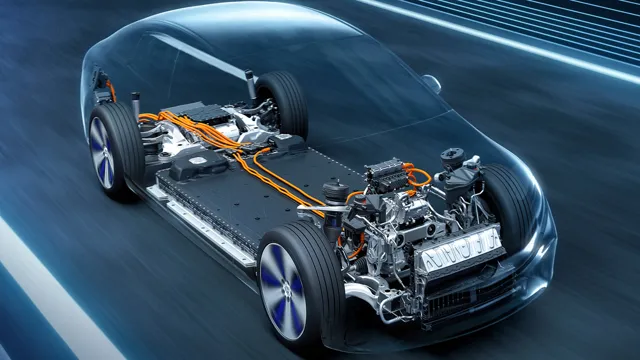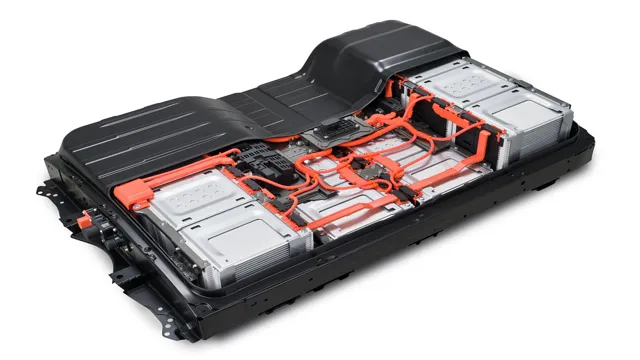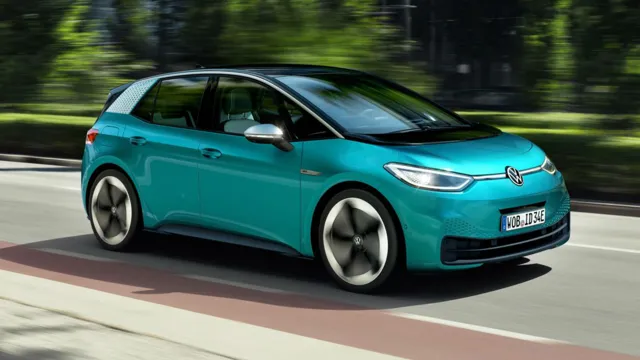Charge into the Future: Innovative Electric Car Design Technology Explained
Electric cars have seen a tremendous evolution in recent years as car manufacturers gear towards sustainable and eco-friendly mobility solutions. Regardless of their potential in reducing carbon emissions, electric vehicles are now focused on providing an exciting and innovative driving experience. With this vision in mind, several exciting design techs are in the works that will transform the future of electric cars.
From autonomous driving capabilities to faster charging times, new technologies and design features are being developed to address the current limitations of electric cars. Car makers are striving to make electric vehicles a more viable and attractive option for car buyers by imbuing them with sleek, futuristic, and aerodynamic designs. One of the most eye-catching designs in the works is the hyper-futuristic ‘hover car’ concept.
The concept aims to offer a smooth and noiseless ride by lifting off the ground, essentially eliminating the need for wheels. Another exciting development is the electronic skin concept that could transform the surfaces of electric cars into interactive displays that provide a wide range of information about the car’s performance and other things. The future of electric car design tech is bright, and the industry is set to continue to push the limits.
Improved battery technologies that can deliver longer driving ranges, more efficient power regeneration systems, and better energy storage are all in development. The future of car design is exciting, and the possibilities are endless. With the electric vehicle industry only set to grow, we can look forward to seeing more astounding innovations that will shape the future of personal transportation forever.
Advancements in Electric Motors
Electric car design technology continues to evolve rapidly, with advancements in electric motors being a key driver of these improvements. Modern electric motors are more efficient than ever, meaning that they can produce more power while consuming less energy. This has resulted in longer driving ranges for electric cars and shorter charging times.
Additionally, new motor designs have provided automakers with more flexibility when it comes to fitting electric motors into their vehicles. For example, some automakers are now utilizing electric motors that are integrated into transmissions, resulting in more compact and streamlined powertrains. These advancements in electric motor technology are helping to make electric cars more practical and affordable for everyday consumers, and they are paving the way for a future where electric vehicles are the norm rather than the exception.
As the demand for electric cars continues to grow, it’s likely that we will see even more exciting new developments in electric motor technology in the years to come.
Improved Battery Efficiency
With the advancements in electric motors, battery efficiency has also seen a notable improvement. Electric motors are becoming more efficient, meaning they require less power to run, and as a result, less battery power is needed. This is great news for electric vehicle manufacturers and users, as it means that electric cars can now go much farther on a single charge than ever before.
These improved motors help save energy and reduce greenhouse gas emissions, making them an eco-friendly and cost-effective solution. Overall, advancements in electric motors are revolutionizing the way we think about energy consumption and transportation, providing a promising future for the automotive industry.

Innovative Charging Solutions
Electric motors have seen a lot of advancements in recent years, and one key area that has seen a lot of progress is charging solutions. Companies are looking for innovative ways to make charging electric vehicles more accessible and efficient. One of the most exciting developments is wireless charging, which eliminates the need for cables and plugs.
It’s similar to charging a phone wirelessly, except on a much larger scale. This technology has been tested in buses, where the vehicles can park over a charging pad and wirelessly charge their batteries as they wait for passengers to board or disembark. This system not only saves time but also reduces wear and tear on the batteries, ultimately prolonging their lifespan.
For electric vehicles, wireless charging could revolutionize the industry, making charging much easier and more accessible. This could encourage more people to switch to electric vehicles, knowing that they can quickly charge their cars without having to search for a charging station or deal with the inconvenience of cables and plugs.
Revolutionary Car Designs
Electric car design technology has revolutionized the automotive industry in recent years. It’s been an exciting time for auto enthusiasts, who have been eagerly anticipating new designs and improved consumer models. One of the benefits of electric car design technology is that it allows engineers to think outside the box.
They can experiment with new materials, streamline the car’s design for better aerodynamics, and create more efficient power systems. For example, electric car designers are now incorporating bodywork and solar panels that not only look sleek but also provide a power boost to the car’s battery. What’s more, electric car design technology is quickly advancing, pushing the boundaries of what is possible.
With the development of artificial intelligence and machine learning, we can expect to see even more innovative and intuitive designs that are safe, eco-friendly, and cutting-edge. Whether you’re a fan of classic or futuristic cars, it’s hard not to appreciate the exciting possibilities that electric car design technology can offer.
Aerodynamic Shapes and Materials
Revolutionary Car Designs Emphasizing Aerodynamic Shapes and Materials The automotive industry is constantly evolving, and one significant change that has emerged in recent times is the focus on aerodynamic design. The use of aerodynamic shapes and materials has contributed to the development of revolutionary car designs that have improved performance, speed, and fuel efficiency. Automakers are incorporating elements such as sleek lines, sharp angles, and sculpted curves to enhance airflow and reduce drag.
Additionally, the novel use of lightweight materials such as carbon fiber, aluminum, and magnesium alloys has contributed to the overall reduction of vehicle weight, improving handling and stability on the road. The integration of aerodynamic design and lightweight materials has also led to more efficient engines and a decrease in emissions, making cars more eco-friendly. Revolutionary car designs such as the Tesla Model S, BMW i8, and the Koenigsegg Regera have incorporated aerodynamics and materials innovation to create designs that are not only visually striking but also provide a superior driving experience.
As automakers continue to push the limits of aerodynamic design, the future of the automotive industry is looking bright and exciting.
Intuitive and User-Friendly Interiors
Revolutionary car designs have brought about a significant shift in the automotive industry, specifically when it comes to car interiors. Car manufacturers are focused on creating intuitive and user-friendly interiors that provide a comfortable and efficient experience for drivers and passengers alike. The design of the dashboard, for example, has evolved to feature easy-to-read displays and incorporate sleek, touch-friendly interfaces.
Additionally, seats are being engineered to be more ergonomic, adjustable, and comfortable to accommodate long journeys. These changes not only enhance the driving experience but also promote safety by minimizing distractions and allowing drivers to focus on the road ahead. Overall, intuitive and user-friendly car interiors revolutionize the way we interact with our vehicles and make driving more enjoyable.
Autonomous Driving Systems
Autonomous driving systems have brought about revolutionary car designs that have the potential to transform the way we travel and commute. With the introduction of this technology, cars are no longer just transportation devices. They have become advanced machines that can drive themselves and provide a safer and more efficient driving experience.
The shift towards autonomous driving has forced car manufacturers to come up with innovative and futuristic designs that can accommodate this new technology. Some car designs feature a sleek and minimalist look, while others integrate an ergonomic and user-friendly interior. The latest car designs also incorporate advanced sensors, cameras, and LiDAR technology to ensure vehicles respond quickly and safely to their surroundings.
As we continue to develop more sophisticated autonomous driving systems, car designs will also adapt to meet the changing needs and preferences of drivers. From ultra-modern sports cars to eco-friendly family cars, the autonomous driving revolution is providing us with unprecedented flexibility and freedom in the way we travel.
Sustainable Manufacturing Practices
Electric car design technology has come a long way in recent years, allowing us to create vehicles that are both sustainable and efficient. These cars are not only better for the environment, but they also provide significant cost savings for drivers. The design of electric cars involves a deep understanding of the technology and manufacturing processes involved.
Sustainable manufacturing practices are key to the production of these vehicles, as they help to minimize waste and energy usage. This includes the use of recyclable materials, reducing carbon emissions during production, and optimizing energy usage throughout the manufacturing process. These practices not only reduce the environmental impact of electric cars, but they also promote a more sustainable future for us all.
By implementing these practices across the automotive industry, we can work towards creating a more sustainable future, one electric car at a time.
Reducing Carbon Footprints
Sustainable manufacturing practices are becoming more and more critical in reducing carbon footprints. Many companies are starting to realize the importance of adopting environmentally friendly manufacturing processes to cut down on their carbon emissions. Sustainable manufacturing practices include using renewable energy sources, recycling materials, reducing water usage, and implementing sustainable design.
By reducing their energy consumption and using renewable energy sources such as wind or solar power, companies can significantly decrease their carbon footprint and minimize their contribution to climate change. Moreover, by recycling materials, manufacturers can save resources and reduce waste production, improving the overall sustainability of their operations. By implementing sustainable design, companies can also reduce the amount of energy and materials required to produce their products.
Sustainable manufacturing practices may require an initial investment, but they are essential for companies looking to minimize their environmental impact and stay ahead of the curve in a changing world.
Recycling and Reuse of Materials
Sustainable Manufacturing Practices
Recycling and reuse of materials are critical practices when it comes to sustainable manufacturing. This approach involves creating products that last longer and can be repurposed or recycled when they reach the end of their life cycle. By doing this, we can reduce waste and conserve valuable resources.For example, instead of using new raw materials to make products, manufacturers can use recycled ones. This approach can save energy and reduce pollution by reducing the amount of waste that goes to landfills. Additionally, reusing materials like packaging can save on costs and reduce environmental impact.
Recycled materials typically require less energy and fewer resources to produce than new materials, making them a cost-effective alternative. Businesses that prioritize sustainability through recycling and reuse practices send a strong message to consumers that they care about the environment and are committed to reducing their impact.
The Impact on the Automotive Industry
With the advancement in electric car design technology, the automotive industry is experiencing a major shift. Electric cars are becoming more mainstream, and are changing the way people think about transportation. One of the major impacts on the industry is the increased demand for charging infrastructure.
As electric cars become more common, there will be a need for more charging stations to support them. This presents an opportunity for new businesses in the industry such as charging infrastructure development companies, as well as a challenge for existing infrastructure providers to adapt to new technologies. Another impact of electric car design technology is the shift towards more sustainable materials and manufacturing processes.
Electric vehicles are becoming more eco-friendly, and manufacturers are starting to embrace this trend by using fewer raw materials and developing more sustainable production methods. This not only benefits the environment, but also presents opportunities for manufacturers to differentiate themselves in the market and attract environmentally conscious customers. Overall, the impact of electric car design technology on the automotive industry is significant and is driving change throughout the industry.
Conclusion
In conclusion, electric car design technology is not only the future of transportation, but also the future of sustainability. It’s a culmination of clever engineering, advanced battery technology, and a desire to reduce our carbon footprint. As we embrace this revolutionary change, we say goodbye to the traditional combustion engine and welcome a new era of quieter, cleaner, and smarter vehicles.
So hop on board, buckle up, and get ready for an electrifying journey towards a greener tomorrow!”
FAQs
What is electric car technology?
Electric car technology is the use of electric power to operate car functions and provide energy for propulsion.
How does the design of an electric car differ from a traditional gasoline-powered car?
The design of an electric car typically includes a battery pack, an electric motor, and regenerative braking technology. These components replace the traditional internal combustion engine and fuel tank found in gasoline-powered cars.
What are the advantages of electric car technology over gasoline-powered cars?
Electric car technology has several advantages over traditional gasoline-powered cars, including lower operating costs, zero-emissions, and improved energy efficiency.
Can electric car technology be used in larger vehicles, such as trucks or buses?
Yes, electric car technology can be used in larger vehicles. In fact, electric buses and trucks are becoming increasingly common, particularly in urban areas where emissions and noise pollution are major concerns.




